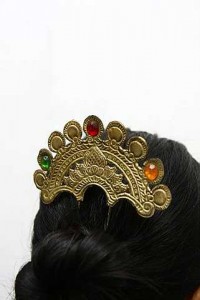THIS is a traditional Portuguese cucuk sanggul (hair pin), still worn by Portuguese women in Malaysia during festivals and special occasions, centuries after Alfonso D’Albuquerque led a fleet of ships to Malacca to set up a new government.
It has been 500 years since the Portuguese captured Malacca, and even though their rule ended 370 years ago when the Dutch took over, they left behind a cultural heritage that is still alive today, especially in the Portuguese Settlement in Malacca.
When the Dutch began their reign, a few Portuguese stayed behind and formed a fishing community that still exists today – though they have since inter-married with the local population.
They identify themselves as Malaysian, but have not forgotten their roots, as members of the community speak Portuguese fluently and celebrate Portuguese festivals like Festa de San Pedro, Festa de San Juang and Festa Intudu.
The merry bunch are known for the their dances, music and singing, with Jinggling Nona being their most famous tune, while their most famous dish is “Curry Dabel”.
Apart from this community, Portuguese influence is evident in architecture like the A’Famosa Fortress, and in their language, too.
Many do not realise this, but a few words in Bahasa Malaysia like almari (cupboard), bendera (flag), mentega (butter), garfu (fork) and meja (table), originate from the Portuguese language.
Despite the many changes in Malacca’s society over the past 500 years, one of the oldest communities in Malaysia has stuck true to its roots, a truly amazing feat in an ever-changing world. — By Nasa Maria Entaban


Tell us what you think!